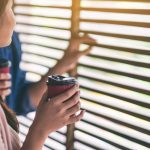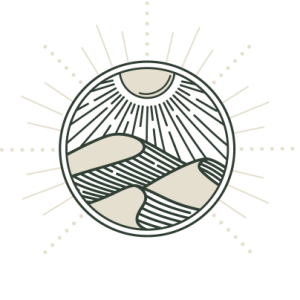Exterior wall coatings are special layers applied to the outside of buildings to protect and improve their appearance. These coatings offer several benefits:
- Weather Resistance: They shield walls from rain, sun, wind, and other weather conditions.
- Durability: They help walls last longer by resisting damage.
- Aesthetic Appeal: They enhance the look of your building with various colours and finishes.
Investing in these coatings is worthwhile for homeowners and property managers, as they provide long-lasting protection and cut down on the need for frequent maintenance.
Related article:
What are Exterior Wall Coatings?
Exterior wall coatings are protective and decorative layers applied to the outside surfaces of buildings. They serve several purposes:
- Protection: They protect walls from environmental damage, such as moisture, UV rays, and pollutants.
- Durability: They enhance the lifespan of the wall by providing a barrier against wear and tear.
- Aesthetic: They improve the appearance of the building, offering a variety of colours and finishes.
- Insulation: Some coatings can improve thermal insulation, helping to regulate indoor temperatures.
Common types include:
- Paint: Traditional option, available in various finishes.
- Render: A thicker, cement-based coating that can be textured.
- Stucco: A plaster-like material often used for a more traditional look.
- Brick Slip Systems: Thin layers of real brick attached to the wall for a classic appearance.
The choice of coating depends on the building’s location, climate, and desired appearance.

Types of Exterior Wall Coatings
Choosing the right exterior wall coating can enhance both the appearance and longevity of your building. Here’s a guide to some of the most common types of coatings, their benefits, and considerations:
Acrylic Coatings
Composition: Acrylic coatings are made from water-based acrylic polymers mixed with pigments and additives.
Benefits: They provide strong adhesion and are known for their durability and colour retention. Acrylic coatings are also easy to apply and maintain. They work well on various surfaces like timber, masonry, and stucco.
Applications: Acrylic coatings are versatile and suitable for both residential and commercial properties.
Pros & Cons:
- Pros: They are durable, maintain their colour well, and are straightforward to apply and clean.
- Cons: Acrylic coatings might not handle extreme weather conditions as effectively as some other coatings.
Elastomeric Coatings
Composition: These coatings are rubber-based and consist of elastomeric polymers, pigments, and additives.
Benefits: Elastomeric coatings are highly flexible, which allows them to cover cracks and imperfections effectively. They offer excellent weather resistance and waterproofing capabilities.
Applications: Ideal for surfaces that experience movement or significant temperature fluctuations, such as older buildings or structures in extreme climates. They are often used on stucco, concrete, and masonry.
Pros & Cons:
- Pros: Highly flexible, excellent at waterproofing, and effective at bridging cracks.
- Cons: Typically more expensive than acrylic coatings.
Silicone Coatings
Composition: Silicone coatings are based on silicone polymers combined with pigments and additives.
Benefits: They provide outstanding weather resistance, breathability, and durability. Silicone coatings are also resistant to mould and mildew, making them a good choice for harsh climates.
Applications: These coatings are particularly useful for exterior walls in severe weather conditions and are commonly applied to masonry, stucco, and concrete surfaces.
Pros & Cons:
- Pros: Excellent resistance to weather, breathable, and resistant to mould and mildew.
- Cons: Can be pricier compared to acrylic and elastomeric coatings.
Stucco Coatings
Composition: Stucco coatings are made from a mixture of cement, sand, and water. They are applied wet and then harden as they dry.
Benefits: Stucco coatings offer a durable, fire-resistant, and low-maintenance finish. They are known for their longevity and can withstand various environmental conditions.
Applications: Stucco is commonly used on both residential and commercial buildings, especially in Mediterranean climates.
Pros & Cons:
- Pros: Durable, fire-resistant, and requires minimal maintenance.
- Cons: May crack if not applied correctly, which can necessitate repairs.
Cement-Based Coatings
Composition: These coatings are made from cement, sand, and polymers. They are applied wet and harden as they dry.
Benefits: Cement-based coatings are known for their durability, excellent waterproofing properties, and resistance to abrasion and impact.
Applications: Often used on concrete, masonry, and stucco surfaces where a robust and durable finish is required.
Pros & Cons:
- Pros: Very durable, great at waterproofing, and resistant to abrasion and impact.
- Cons: They may not offer the same aesthetic appeal as some other coating options.
Choosing the right exterior wall coating depends on your building’s needs, local climate, and budget. Each type offers unique benefits and considerations, so evaluating these factors will help you make an informed decision.

Benefits of Using Exterior Wall Coatings
Protection
Exterior wall coatings play a vital role in protecting your building from various environmental threats:
- Weather Resistance: They create a barrier against rain, snow, sun, and wind, shielding your walls from moisture, UV rays, and harsh weather conditions.
- Mildew & Algae Resistance: Many coatings are designed to prevent mildew and algae growth, which helps keep your walls clean and free from discolouration.
- Moisture Barrier: These coatings prevent water from seeping into your walls, which is crucial in areas with high rainfall or humidity to avoid damage.
Aesthetics
In addition to protection, exterior wall coatings improve the look of your building:
- Colour Options: You can choose from a wide variety of colours and finishes to match your personal style and create a unique appearance for your home or building.
- Texture: Different textures can add depth and dimension, making your walls more visually appealing.
- Renewed Look: Coatings can refresh the appearance of older buildings, giving them a modern and revitalized look.
Other Benefits
Exterior wall coatings offer several additional advantages:
- Energy Efficiency: Some coatings have insulating properties that can help improve your building’s energy efficiency, potentially lowering your energy bills and reducing your environmental footprint.
- Reduced Maintenance: They extend the lifespan of your walls and minimize the need for frequent repainting, which saves you both time and money on maintenance.
Factors to Consider When Choosing a Coating
Selecting the right exterior wall coating involves thinking about several important factors:
Location
- Climate: Your local climate will influence your choice. In areas with lots of rain or high humidity, you’ll need coatings with strong waterproofing. For regions with intense sunlight, like Sydney, choose coatings that offer good UV protection.
Building Materials
- Wall Type: Different coatings work better with different materials. Make sure to select a coating that is designed to adhere to your specific wall material, whether it’s timber, masonry, stucco, or concrete.
Desired Finish
- Colour: Pick colours that match your building’s design and your personal style.
- Texture: Decide on the texture you want. Smooth finishes offer a sleek look, while textured finishes can give a more rustic or modern feel.
- Sheen: Choose a sheen level—matte, satin, or gloss—that affects how the coating looks and reflects light.
Budget
- Cost: Coating prices vary widely. Consider both the cost of the coating itself and the application expenses.
- Application: Professional application can be more expensive but often ensures a better, longer-lasting result.
Maintenance Requirements
- Ease of Maintenance: Look for coatings that are easy to maintain and clean.
- Durability: Opt for a coating that is durable and long-lasting to reduce the need for frequent repainting and repairs.
By carefully evaluating these factors, you can choose the best exterior wall coating for your building, ensuring it provides the right protection, aesthetic appeal, and long-term value.
Application Process & Preparation
Applying exterior wall coatings involves several important steps to achieve a successful and long-lasting finish:
Preparing the Wall Surface

- Cleaning: Start by thoroughly cleaning the wall to remove dirt, grime, loose paint, and other contaminants.
- Repairing: Fix any cracks, holes, or imperfections in the wall to ensure a smooth surface.
- Priming: Apply a primer to create an even base that helps the coating stick better.
Application Techniques
The method you use depends on the coating type and the wall surface:
- Spraying: Ideal for large areas, spraying gives a smooth, even finish.
- Rolling: Best for smaller areas, rolling can add texture to the finish.
- Brushing: Useful for detailed or hard-to-reach spots, brushing is a traditional method for precise work.
Drying Time and Curing
Allow enough time for the coating to dry completely. The curing process, where the coating hardens and reaches its full strength, varies depending on the type of coating and environmental conditions.
Important Considerations
- DIY vs. Professional:
- DIY: Doing it yourself can save money but requires skill and careful attention to detail to get a professional-quality finish.
- Professional: Hiring a professional ensures proper preparation and application, which can save time and provide a high-quality, long-lasting result.
- Safety Precautions:
- Wear safety gear like gloves, eye protection, and a respirator mask during application.
- Ensure good ventilation while applying and drying the coating.
- Follow the manufacturer’s safety guidelines for the specific coating you’re using.
Maintenance & Durability
To keep your exterior wall coatings looking good and lasting long, proper maintenance and care are essential.
Cleaning and Repair
- Cleaning: Regular cleaning helps maintain the look and effectiveness of your coatings.
- Frequency: Clean your walls at least once a year. If your area has harsh weather conditions, you might need to clean them more often.
- Cleaning Solution: Use a mild detergent with a soft brush or sponge. Avoid harsh chemicals or abrasive cleaners that could damage the coating.
- Rinse: Rinse thoroughly with clean water to remove all soap and dirt.
- Repairs: Address any issues promptly to maintain the coating’s integrity.
- Cracks or Chips: Fix small cracks or chips with matching paint or coating.
- Peeling or Flaking: Scrape off any peeling or flaking areas and then repaint or recoat.
Durability of Coatings
The lifespan of exterior wall coatings depends on the type of coating, how well it was applied, and environmental conditions:
- Acrylic Coatings: Usually last 5-10 years.
- Elastomeric Coatings: Typically last 10-15 years.
- Silicone Coatings: Known for durability, often lasting 15-20 years or more.
- Stucco Coatings: Can last 20-30 years or more with good maintenance.
- Cement-Based Coatings: Extremely durable, often lasting 20-30 years or more.
Remember these simple tips and go for a top-notch coating to keep your exterior walls looking great and well-protected with minimal maintenance for many years.











